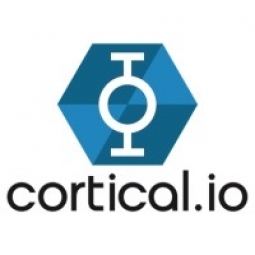Customer Company Size
Large Corporate
Region
- America
Country
- United States
Product
- SemanticPro Extract & Analyze
Tech Stack
- Natural Language Processing
- Machine Learning
Implementation Scale
- Enterprise-wide Deployment
Impact Metrics
- Productivity Improvements
- Cost Savings
Technology Category
- Analytics & Modeling - Natural Language Processing (NLP)
- Analytics & Modeling - Machine Learning
Applicable Functions
- Business Operation
Use Cases
- Regulatory Compliance Monitoring
- Fraud Detection
Services
- Data Science Services
About The Customer
The customer is a major commercial property insurer based in the United States. The company has a global presence with offices worldwide and serves about 2,000 high-value commercial customers. Each of these customers has as many as 30 policies, which are created at the company's head office and then forwarded to regional offices for local adaptation. The company does not use industry-standard forms, which means that the binding copies of locally issued documents may differ from the original in both format and content. The company's team spends approximately one third of their time searching for differences between the source policy and the final version, a process that is both manual and time-consuming.
The Challenge
The commercial property insurer with offices worldwide has about 2,000 high value, commercial customers with as many as 30 policies each. The head office creates standard policies which are forwarded to the regional offices and adapted locally. As the company does not use industry standard forms, the binding copies of locally-issued documents may differ from the original in format and content. The process of reviewing the locally-issued policies is done manually and is time consuming. The team responsible for this task spends approximately one third of their time on searching for differences between source policy and final version. So far, this review process could not be automated because of the different file types and formats, and because no tool could understand semantic variations. However, the company sought for an automation solution, as about 70% of the documents still contained errors after the manual review.
The Solution
The company decided to leverage SemanticPro Extract & Analyze to automate the comparison of standard policies with locally-issued documents. To cover the variety of formats and language, SemanticPro Extract & Analyze was trained with 100 documents coming from the different regions based on annotations from the company’s subject matter experts. Once trained, the solution is able to compare policies on a word-by-word as well as clause-by-clause basis and understands different formulations of the same concept. For example, it recognizes a Force Majeure provision where the word “war” has been mistakenly replaced with “conflict”. The solution quickly and accurately reports the differences in all terms and conditions between original documents and locally-issued policies, enabling the company to perform timely corrections in accordance with tight deadlines.
Operational Impact
Quantitative Benefit

Case Study missing?
Start adding your own!
Register with your work email and create a new case study profile for your business.
Related Case Studies.

Case Study
Remote Monitoring for Environmental Compliance
Emerson wanted to provide a connected environmental analyzer to their customers. They wanted to leverage IoT technologies to provide a software solution that was easy to use, real-time and centralized. Compliance with pollution control board guidelines and the ability to remotely calibrate and troubleshoot these devices was the primary objective. Requirements - Centralized Remote Monitoring. - IoT Based Smart Environmental Analyzers. - Remote Calibration and Troubleshooting. - User Friendly Application. - Reporting & Dashboards. - Compliance with pollution control board guidelines.

Case Study
ELI LILLY ADOPTS MICROMEDIA’S ALERT NOTIFICATION SYSTEM
Pharmaceutical production is subject to a strict set of enforced rules that must be adhered to and compliance to these standards is critically necessary. Due to the efforts of WIN 911’s strategic partner Micromedia, Lilly was able to adopt an alarm notification infrastructure that integrated smoothly with their existing workflows and emergency hardware and protocols. These raw energy sources enable the industrial process to function: electricity, WIN-911 Software | 4020 South Industrial Drive, Suite 120 | Austin, TX 78744 USA industrial steam, iced water, air mixtures of varying quality. Refrigeration towers, boilers and wastewater are monitored by ALERT. Eli Lilly identified 15000 potential variables, but limitations compelled them to chisel the variable list down to 300. This allowed all major alarms to be covered including pressure, discharge, quantity of waste water discharged,temperature, carbon dioxide content, oxygen & sulphur content, and the water’s pH.

Case Study
IoT Solutions Give Commercial Fishing Real-time insights
Technology to support vessels in the commercial fishing industry had not changed significantly since the advent of radar. Over the past 40 years commercial fishing in the United States has continued to be one of the most active, yet regulated industries. The combination of federal regulations and lack of technology created an opportunity for Faria Watchdog to go-to-market with a solution.

Case Study
Largest Production Deployment of AI and IoT Applications
To increase efficiency, develop new services, and spread a digital culture across the organization, Enel is executing an enterprise-wide digitalization strategy. Central to achieving the Fortune 100 company’s goals is the large-scale deployment of the C3 AI Suite and applications. Enel operates the world’s largest enterprise IoT system with 20 million smart meters across Italy and Spain.

Case Study
KeyBank's Digital Transformation with Confluent's Data in Motion
KeyBank, one of the nation's largest bank-based financial services companies, embarked on a national digital bank initiative following the acquisition of Laurel Road, a digital consumer lending business. The initiative aimed to build a digital bank focused on healthcare professionals looking to refinance student loans and buy homes. A significant challenge was reducing the time to market for new products by democratizing data and decoupling systems across the IT landscape. Like many large enterprises, KeyBank had a variety of vendor applications, custom applications, and other systems that were tightly coupled to one another. New projects often required developing specific point-to-point integrations for exchanging data, which did not address the needs of other downstream systems that could benefit from the same data.
Case Study
BharatPe: Leveraging Google Cloud for Enhanced Data Analytics and AI to Promote Digital Payments
BharatPe, a fintech company founded in 2018, aimed to make digital payments more accessible for over 10 million small offline merchants and kirana store owners in India. However, the company faced challenges in managing the massive amounts of data generated daily from payment processing to business analysis. Prior to using Google Cloud, BharatPe managed its legacy data warehouse with limited capacity to run a large number of queries. The company ran key performance indicator (KPI) reports, without the ability to understand real-time data patterns. Loading three months of data for quarterly reports took more than 30 minutes on the legacy system, and in some cases, queries failed because the system could not scale to support analytical needs. Additionally, BharatPe operates in a multi-cloud environment for disaster recovery and needed a data platform that could run queries against data, regardless of where it resides.







